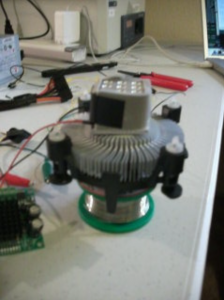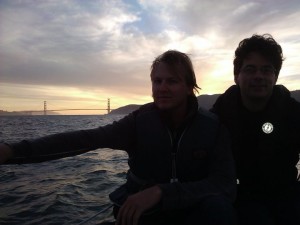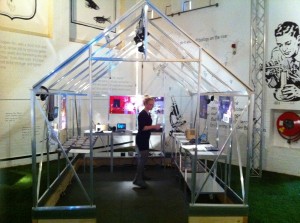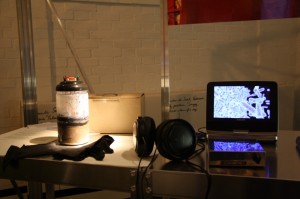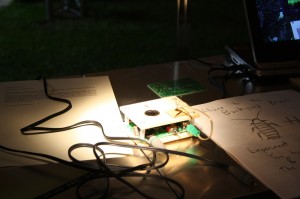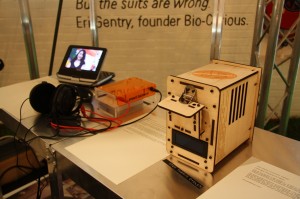It’s no secret that we’re fast approaching the shipment of our Kickstarter and pre-order OpenPCR kits. But today marked a new milestone: the first assembly of an OpenPCR by someone other than Tito or myself. Eri Gentry was kind enough to spend the day assembling an OpenPCR and giving feedback on our instructions, which we’ll role into the final printing. Here she shows off the completed unit, which will be housed at the BioCurious hackerspace:
The boxes you see in the background are OpenPCR components for the first kits. We’re just awaiting one more shipment from China (expected next week), and making some final software changes, and then these boxes are out the door.




